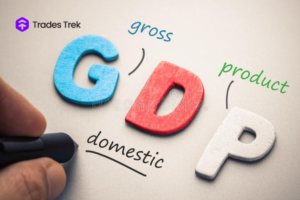Starting up as an investor is always a daunting task. It’s always a frustrating venture trying to understand how the stock market works and being faced with different lingo with little clue of what they mean. Do these challenges associated with the stock market limit investing to a certain group of people? Not at all; it isn’t for a set of people; investment is for everyone with plans of retiring someday. Therefore, investment is accessible to all, and the first step is to understand some terms and have a strategy to help you stay afloat even during turbulent times.
Many stock market terminologies are associated with the stock market, but for this article, we’ll focus on some stock terminologies you must know and understand before investing. Before exploring each term, with vivid illustrations to back it up, let’s understand what stock terminologies mean.
What Are Stock Market Terminologies?
You’ll hear these words as you listen, read, and explore the stock market. As you venture into the stock market, you must understand what these words mean. Let’s now explore different stock market terms, shall we?
- Stock Market
Just as we have a physical market where we purchase and sell various food, groceries, and other household essentials, there is also a market where stocks, representing ownership claims on businesses, are sold. Companies raise money to fund operations by selling stock shares, creating wealth for investors. All of these transactions take place in the stock market.
- Asset Allocation
As an investor, one major aspect of investing is knowing when and where to put your money to work in a way that balances risk. The process of deciding what assets, such as bonds, stocks, and cash, to invest in is what we call asset allocation. For instance, you have 300,000 NGN to invest. It’ll be unwise to invest all in one asset; allocating it to different assets to curb losses is a better investment approach. An investor’s Principles of Investing and the type of analysis they perform influence their asset allocation.
- Blue Chip Stocks
These are considered safe and less risky stocks due to consistent profit. Some well-established companies in Nigeria, such as Nigerian Breweries, Business Nigeria, and many more, have a steady growth track record. If you purchase stocks from companies with enduring records of steady growth, those stocks are called blue-chip stocks.
- Market Capitalization
Market capitalization is the value of a company based on its current share price and the total number of outstanding stocks. Market Cap is one way to determine a share’s return and risks. Therefore, it helps investors select stocks with a criterion in mind. Let’s assume company KJL has 10 million outstanding shares, and the current price of each stock is 200 NGN. Therefore, the market capitalization will be 10,000,000 × 200 = 2,000,000,000.
- Volatility
The rate at which a stock increases or decreases over some time. It’s the up-and-down market movement. Volatile stocks tend to be riskier than less volatile stocks. However, the more volatile a stock is, the more chances for higher returns. Let’s assume the price of a stock was at 120 NGN; after a few hours, the price shoots up or down, different from the expectation. Such movement reflects the volatility of a position if it goes through remarkable changes in value and is seen as a highly volatile stock.
Low volatility means that the position is relatively stable. On the other hand, high volatility means that the position isn’t stable, causing high uncertainty.
- Balance Sheet
The balance sheet is one of the financial documents a company gives to the public, such as investors, customers, etc., to help the public know the company’s financial strength. It shows the assets, liabilities, and total shares, the business’s equity.
A balance sheet is broken into two main areas. Assets are at the top or left, and below them are the or to the right are the company’s liabilities and shareholder equity. Understanding how a balance sheet is analyzed and how to read one is very key, as an investor, to accessing the company’s ability to pay for its near-term operating needs, meet future debt obligations, and distribute to owners.
- Top-Down Approach
The top-down approach is one major approach investors apply to find the StockStock. Investors look into the macro picture of the economy and later research the individual StockStock. This approach looks at the bigger picture, that is, which economy is doing great, then the general market of the economy, narrowing down to the sector that will outperform. Finally, you research some appealing stocks in that industry; this is the top-down approach, which starts with the big picture and narrows it down until you arrive at a particular sector.
- Bottom-Down Approach
This approach is the opposite of the top-down approach. In this approach, you start with company research and later move to find other details.
Regardless of the market condition or the macroeconomic factors, the bottom-down approach focuses on how fundamentally strong a company is. An investor using this approach focuses on revenues, earnings, financial ratios, products/ services, sales growth, and company management. Finding a company that may outperform the market is the focus of the bottom-down approach to investing.
- Annual Report
The annual report is a document that provides an overview of the company’s financial operations and conditions to its shareholders, customers, and investors every year. They include statements from the CEO, accomplishments, key activities, and financial statements. This report builds accountability and transparency from the company to its investors.
- Bid vs Ask Price
When we want to purchase ice cream, we head to the stand where it’s sold to purchase, We’re told a specific price, and we can agree or disagree. Your decision guarantees you to either have an ice cream or not. The same or similar scenario plays out in the stock market. You buy stocks from someone who already owns the shares and wants to sell them at an agreed price which is convenient for both the buyer and seller.
The price will constantly fluctuate whenever the market is open. At any given point, there will always be the best possible price an investor is willing to pay and the best price one can immediately sell.
A “bid” is the best price an investor will pay for a particular stock or the best possible price you can immediately sell for if you own the StockStock. For instance, the StockStock is trading at 250 NGN. Nobody is willing to buy the StockStock at that price; investors want to buy at 230 NGN, which is the best possible price.
On the other hand, the “ask,” also called an offer, is the best price an investor is willing to sell or the best possible price to buy immediately.
A “bid” is simply the best price one is willing to buy, while an “ask” is the lowest price one is willing to sell.
- Securities
Securities are financial instruments holding some monetary value issued by a government or a company. Stocks, bonds, treasury bills, and mutual funds are tradable securities that entitle the holder to own a portion of the company, that is, owning something without physically holding on to it.
12 . Stock Exchange
A stock exchange, also known as a securities exchange or market, is a platform where investors and traders can buy and sell securities, including shares of StockStock, bonds, and other investment vehicles. The issuing and purchase of such securities and instruments, as well as financial transactions, such as the payment of income and dividends, may be accommodated by stock exchanges. Stock issued by listed firms, derivatives, pooled investment products, and bonds are examples of securities traded on a stock exchange. Buyers and sellers make exclusive deals at a central place, such as the exchange floor, or by using an electronic trading platform, which is how stock exchanges sometimes operate as “continuous auction” markets.
Final Words
Knowing the following 12 stock market terminology will improve your understanding of the market and help you become a successful investor. However, once you do, these stock market terms will become essential to your daily investment life. It takes time to understand and remember all the terms while in the stock market.




